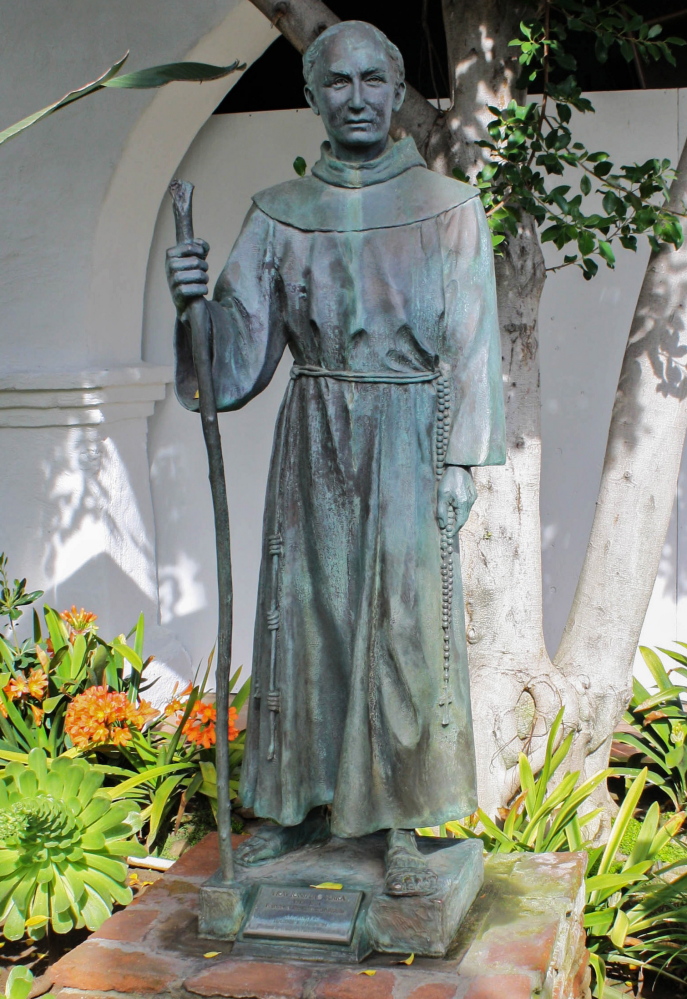When Pope Francis canonizes the 18th-century Spanish missionary Junipero Serra on Sept. 23 in Washington – the first canonization on U.S. soil – he will declare Serra to be enrolled among the saints and “to be venerated as such by the whole church.”
For many Native Americans, however, Serra is no saint. The Indians who joined the missions Serra built were forced to shed their own culture, including their religion, dress and food. Thousands of them died prematurely from European diseases.
“It will be a day of mourning for our people,” says Valentin Lopez, chairman of the Amah Mutsun Tribal Band, located along the central coast of Monterey Bay in California.
Lopez said he and other Native Americans point to Serra’s leadership over a mission system where many were abused and died. Serra “has to be recognized as the architect of the system,” Lopez said.
Serra, a Franciscan theologian who established Catholic missions along the coast of California as he marched north with Spanish conquistadors, has long been treated as a heroic figure by California leaders. A statue of him has stood in the U.S. Capitol – where each state is allowed two statues – since 1931. At the time, Sen. Hiram Johnson, R-Calif., described him as “a pioneer of pioneers, bringing Christian civilization to the primitive and savage land, now a wondrous empire.” Some historians cite his dedication to Native Americans, while others say he oversaw and even contributed to a system that mistreated tribes.
“He was one of the founding fathers of the United States, a saintly example of the church’s universality,” the pope said of Serra in February.
Few Catholic Church observers expected the pontiff’s announcement in January that Serra would be canonized. For one thing, Serra is credited with only one miracle when saints usually need two (the pontiff says that Serra’s life serves as a second miracle).
Francis has fast-tracked several candidates for sainthood, already canonizing 21 individuals and hundreds of martyrs in just over two years as pontiff.
Francis’s decision to canonize Serra will be a gesture to Hispanic Catholics, and the tickets for around 25,000 people to attend the Mass at the Basilica of the National Shrine of the Immaculate Conception will go primarily to Hispanic Catholics from the D.C. area. The pope will celebrate the Mass in Spanish.
Serra was a pivotal force in the Spanish conquest and colonization of California, said Steven Hackel, a history professor at the University of California at Riverside and author of a biography of Serra.
“He’s our Columbus or our Cortez, the one who, right or wrong, for better or for worse, gets all the blame and glory in California,” Hackel said.
“He’s a convenient symbol of everything.”
Send questions/comments to the editors.



Comments are no longer available on this story